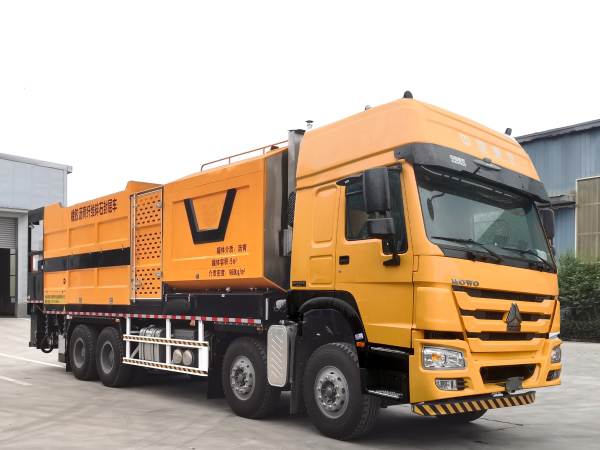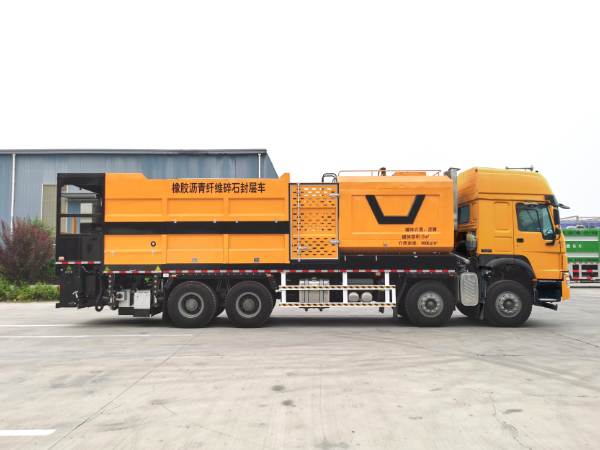The technical feature of the simultaneous gravel sealing technology is that one equipment can spread the bonding material and stone at the same time. The asphalt and stone must be combined within one second. The temperature of the hot asphalt is 140°C when the bonding material is sprayed, and the temperature can be guaranteed to be above 120°C during bonding. The asphalt temperature drops very little. At this time, the fluidity of the asphalt binder is still very good, and the bonding area with the stone is large, which enhances the bonding with the stone. The strength of the stone bond. The traditional surface sealing technology generally uses two different equipments and two processes for spreading construction. Such a long construction time interval will cause the temperature of the asphalt to drop by about 70°C, and the bonding effect between the stone and the asphalt will be poor, resulting in a large loss of stone and affecting the performance of the sealing layer.
Synchronous gravel sealing technology has the following characteristics:


(1) Better waterproofness. The simultaneous spraying of bonding materials in the gravel seal layer can fill the slight cracks in the road surface, reduce the reflective cracks in the road surface, and increase the crack resistance of the road surface, thereby improving the anti-seepage performance of the road surface.
(2) Good adhesion and anti-slip properties. Asphalt or other binding materials bond the aggregate to the original road surface. 1/3 of the aggregate can directly contact the tires. Its roughness increases the friction coefficient with the tires, improving the adhesion and adhesion of the road surface. Slip resistance.
(3) Wear resistance and durability. The gravel and asphalt spread simultaneously form an asphalt binder, and 2/3 of the height of the gravel particles sinks into the asphalt, which increases the contact area between the two, and a concave surface can be formed due to the gross attraction force of the asphalt binder. It is closely combined with the gravel to prevent the loss of gravel, so the synchronous gravel seal has good wear resistance and durability. This is also one of the important factors for synchronous gravel sealing technology to extend the service life of roads.
(4) Economy. The cost-effectiveness of simultaneous gravel sealing is significantly better than other road surface treatment methods, thus greatly reducing road maintenance costs.
(5) The construction process is simple, the construction speed is fast, and traffic can be opened in time.

